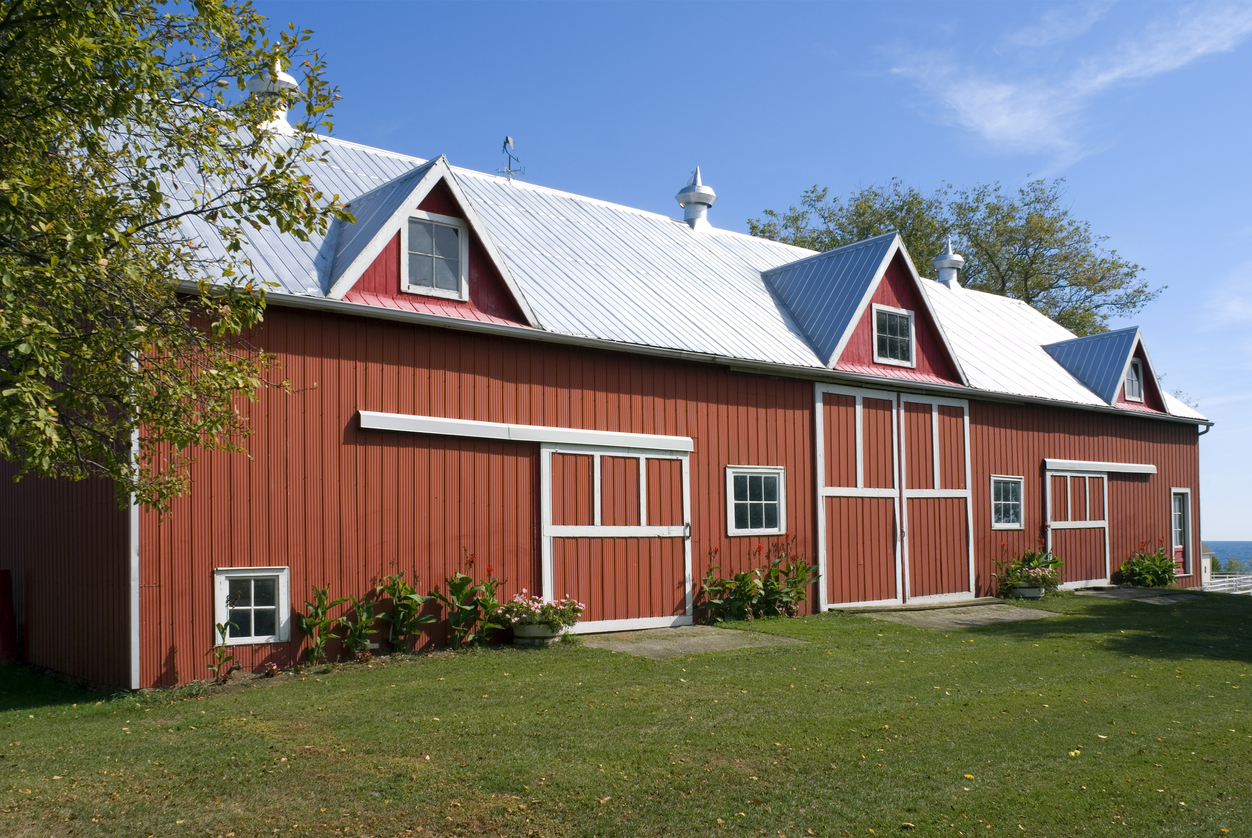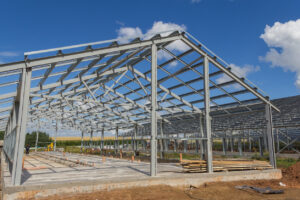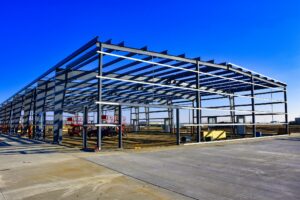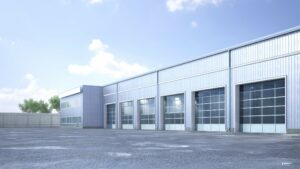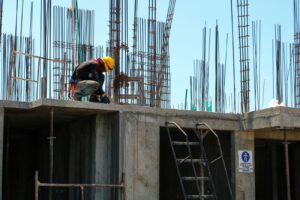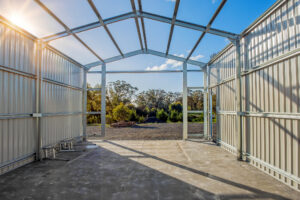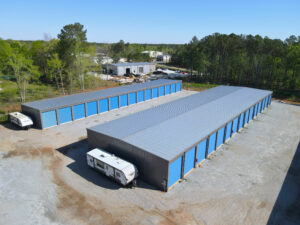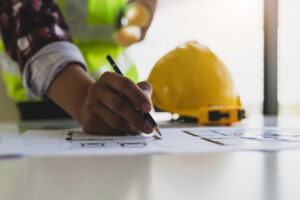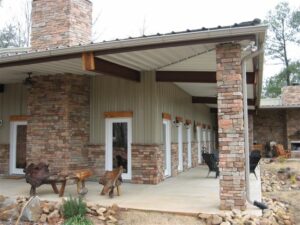Indoor basketball courts are not just for professional athletes, they are buildings that provide a great way for basketball enthusiasts of all skill levels to enjoy the sport year-round. And with the right planning, designing, and budgeting, you can make your dream of having an indoor basketball court a reality.
In this article, we will explore the various solutions and considerations involved in building an indoor basketball court.
Table of Contents:
- Understanding the Basics of Indoor Basketball Court Construction
- Planning and Designing Your Indoor Basketball Court
- Costing and Budgeting for Your Indoor Basketball Court
- Hiring Professionals vs. DIY: What to Choose?
- Conclusion
- Frequently Asked Questions
Understanding the Basics of Indoor Basketball Court Construction
Importance of Space and Location
When it comes to building an indoor basketball court, space and location are crucial factors to consider. You need to have enough space to accommodate the court, as well as clearance for players around the court.
The location should be easily accessible and have adequate room for parking. Ideally, the court should be situated in an area that is not prone to excessive noise or disturbances.
But what makes a great location for an indoor basketball court? Well, apart from the obvious requirement of ample space, it’s important to consider the surrounding environment.
Imagine playing a game of basketball with the sound of traffic constantly interrupting your concentration. That’s why it’s recommended to choose a location away from busy roads or industrial areas.
Furthermore, the orientation of the court within the building is also a crucial consideration. Natural light can greatly enhance the playing experience, so it’s ideal to have windows or skylights strategically placed to allow sunlight to flood the court.
Not only does this create a more pleasant atmosphere, but it also reduces the need for artificial lighting during the day, saving energy and reducing costs.
Did You Know?
As of 2022, Norfolk, Virginia in the United States had 17.6 public basketball hoops for every 10,000 residents.
Material Selection for Indoor Courts
The materials used in the construction of an indoor basketball court play a significant role in its durability and performance. The flooring, for instance, should be made of high-quality materials that offer excellent traction and shock absorption.
Hardwood floors are a popular choice due to their durability and player-friendly characteristics. Additionally, the walls and ceiling should be constructed using materials that can withstand the impact of the ball and provide optimal acoustics.
But did you know that the choice of flooring material can also affect the game itself?
Different types of flooring can have varying levels of grip, which can influence the speed and agility of the players.
Some players prefer a slightly more slippery surface to allow for quick pivots and fast movements, while others prefer a more grippy surface for better traction.
It’s important to consider the preferences of the players who will be using the court and select a flooring material that suits their style of play.
Moreover, the selection of materials goes beyond just the playing surface. The walls and ceiling should be constructed with materials that not only provide structural integrity but also contribute to the overall aesthetics of the court.
Imagine playing in a court with beautifully designed walls that showcase the team’s logo or motivational quotes. It adds an extra level of inspiration and pride to the players, creating a truly immersive basketball experience.
Safety Considerations in Design
Ensuring the safety of players is of utmost importance when designing an indoor basketball court. Proper padding should be installed on walls, columns, and other potential contact points to minimize the risk of injury.
Adequate lighting is also essential to ensure visibility on the court and prevent accidents. Furthermore, ventilation systems should be in place to maintain a comfortable and healthy playing environment.
But safety considerations don’t stop at the physical aspects of the court. It’s also important to think about the psychological well-being of the players. Incorporating elements that promote mental well-being, such as calming colors or motivational artwork, can have a positive impact on the players’ mindset.
After all, a basketball court should not only be a place for physical activity but also a space that fosters a sense of community and positivity.
Additionally, the design should take into account the needs of players with disabilities. Accessibility features, such as ramps or designated seating areas, should be included to ensure that everyone can enjoy the game.
By creating an inclusive environment, the indoor basketball court becomes a place where people of all abilities can come together, bond over their love for the sport, and create lasting memories.
Planning and Designing Your Indoor Basketball Court
Key Elements in Court Design
When planning the design of your indoor basketball court, there are several key elements to consider. These include the court dimensions, which should adhere to the official standards.
The placement of lines, such as the free-throw line and three-point line, should also be carefully measured and marked. Additionally, the location and size of doors, windows, and spectator areas need to be accounted for in the design process.
Did You Know?
The standard size for a professional indoor basketball court is 94 feet in length and 50 feet in width, suitable for full-court games. Half-court games can be played on courts measuring 47 feet by 50 feet (or 14.33 meters by 15.24 meters).
Lighting and Ventilation Needs
Proper lighting is essential for a well-functioning indoor basketball court. It not only improves visibility but also enhances the overall aesthetics of the space.
LED lighting solutions are commonly used due to their energy efficiency and brightness. Ventilation systems, on the other hand, help regulate the temperature and air quality within the court. They should be designed to provide adequate airflow and prevent condensation.
Flooring Options and Their Impact
The choice of flooring for your indoor basketball court can significantly impact the playing experience. Hardwood floors are a popular choice due to their optimal surface grip and shock-absorption properties.
However, there are also alternative options such as synthetic surfaces, which offer different benefits such as enhanced durability and lower maintenance requirements. Ultimately, the right flooring choice depends on your specific needs and preferences.
Another important aspect to consider when selecting the flooring for your indoor basketball court is the level of noise it produces. Hardwood floors, while providing excellent performance, can sometimes generate a significant amount of noise when players run and jump on them.
This can be mitigated by using sound-absorbing underlays or installing acoustic panels on the walls to minimize sound reverberation.
Furthermore, the type of flooring you choose can also have an impact on player safety. Hardwood floors, with their natural shock absorption properties, can help reduce the risk of injuries by providing a forgiving surface that absorbs impact.
Synthetic surfaces, on the other hand, often have built-in cushioning systems that offer additional protection against falls and collisions.
Hardwood is the traditional and most common flooring choice because of its durability and performance. However, alternatives such as synthetic rubber, vinyl, polyurethane, and modular tiles offer benefits like lower cost, ease of maintenance, and good shock absorption, making them suitable for a variety of settings, from professional arenas to recreational facilities.
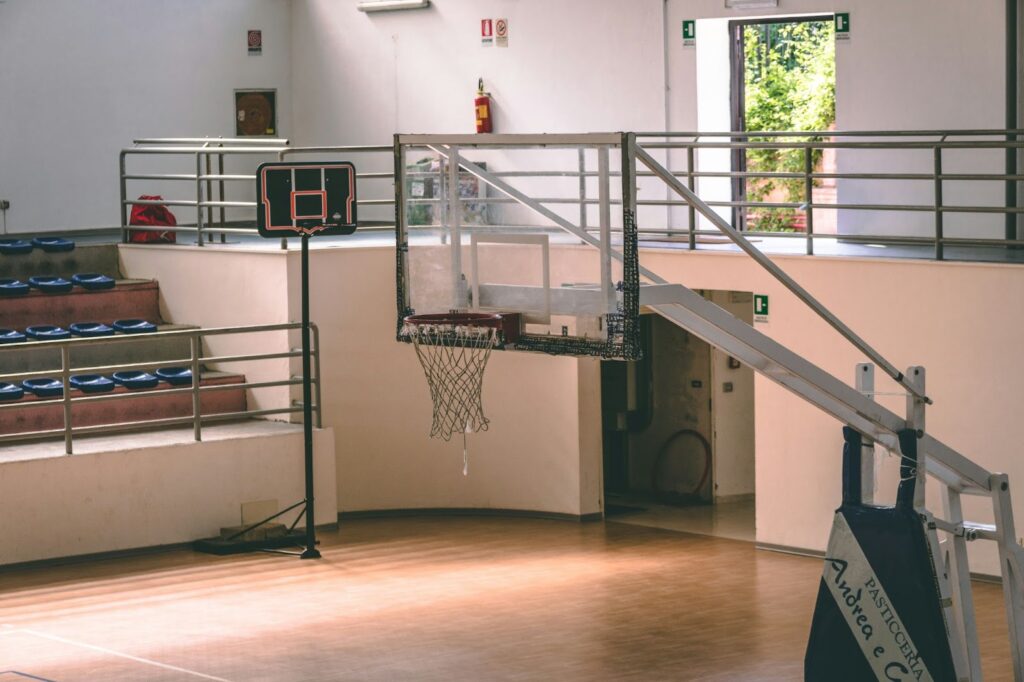
Costing and Budgeting for Your Indoor Basketball Court
Estimating the Cost of Construction
Before embarking on building an indoor basketball court, it is crucial to have a clear understanding of the costs involved. Factors such as the size of the court, materials used, and additional features will affect the overall cost.
Consulting with professionals and obtaining cost estimates based on your specific requirements will help you create an accurate budget.
Check out: A Guide To Building An Indoor Sports Complex
Understanding the Factors Affecting the Budget
Several factors can impact the budget for constructing an indoor basketball court. These include the quality and quantity of materials, labor costs, and the complexity of the design.
Additionally, any extra features such as bleachers, scoreboards, or sound systems will contribute to the overall cost. It is important to carefully consider these factors and allocate the budget accordingly.
Ways to Minimize Costs Without Compromising Quality
While building an indoor basketball court can be a significant investment, there are ways to minimize costs without compromising on quality. One approach is to seek multiple quotes from different contractors to ensure competitive pricing.
Another option is to explore alternative materials or flooring options that offer a balance between cost-effectiveness and performance. Additionally, careful planning and efficient use of space can help optimize the construction process and reduce unnecessary expenses.
When it comes to the size of the court, it’s important to strike a balance between spaciousness and practicality. A larger court may provide more room for players to move around, but it can also increase construction costs.
On the other hand, a smaller court may be more cost-effective, but it could limit the gameplay experience. Consulting with experts can help you determine the ideal size for your indoor basketball court based on your specific needs and budget.
Another factor to consider is the quality of materials used in the construction. While it may be tempting to opt for cheaper materials to cut costs, it is essential to prioritize durability and safety.
Investing in high-quality materials will not only ensure the longevity of your indoor basketball court but also minimize the need for frequent repairs and maintenance, saving you money in the long run.
Hiring Professionals vs. DIY: What to Choose?
When it comes to deciding between hiring professionals or embarking on a do-it-yourself (DIY) project for the construction of an indoor basketball court, there are several factors to consider.
Each option has its own set of advantages and challenges that can significantly impact the outcome of the project.
SteelCo Buildings specializes in providing steel building materials for indoor basketball courts and recreational facilities. We offer pre-engineered designs and customizable options to meet the specific needs of each project.
Pros and Cons of Hiring a Professional
Opting to hire a professional contractor for the construction of an indoor basketball court can offer numerous benefits. Professionals bring a wealth of expertise and experience to the table, ensuring that the construction process is handled efficiently and effectively.
They have established relationships with suppliers, which can help you source high-quality materials at competitive prices, ultimately saving you time and money in the long run. However, it is important to note that the convenience and expertise that professionals provide come at a higher cost compared to undertaking the project yourself.
Moreover, hiring a professional can provide you with peace of mind, knowing that the project is in capable hands. They can navigate any challenges that may arise during the construction process and offer solutions based on their experience, ultimately delivering a high-quality indoor basketball court tailored to your needs and preferences.
Challenges and Rewards of a DIY Project
On the other hand, choosing to tackle the construction of an indoor basketball court as a DIY project can be a fulfilling and cost-effective endeavor. It grants you full creative control over the design and execution of the project, allowing you to personalize every aspect according to your vision.
However, it is crucial to acknowledge the potential challenges associated with DIY projects, such as the requirement for specialized tools and equipment, as well as the significant time and effort investment needed.
Additionally, DIY projects may lack the finesse and professional touch that a seasoned contractor can provide. While you may save on labor costs by opting for a DIY approach, you run the risk of potential errors or oversights that could impact the overall quality and longevity of the indoor basketball court.
It is essential to weigh the benefits of cost savings and creative freedom against the potential pitfalls of limited expertise and resources when deciding whether to undertake the project independently.

Conclusion
Building an indoor basketball court requires careful planning, designing, and budgeting. The choice of materials, court dimensions, and safety considerations are crucial elements to consider.
The cost of construction can vary based on various factors, but there are ways to minimize costs without compromising quality. Whether you choose to hire professionals or take on the project yourself, each approach has its advantages and challenges.
By considering these factors and making informed decisions, you can create the perfect indoor basketball court that meets your needs and provides endless hours of enjoyment.
SteelCo has more than 23 years of experience in dropshipping customizable steel building materials for indoor sports complexes and recreational facilities across the country.
Our team of experts with 100+ years combined experience can assist with design, stamped engineering plans, and project support for timeline coordination, etc. while we also offer guidance on building permits, zoning, and local ordinance.
We work with suppliers who adhere to the standards set by MBMA, AISC, and AISI and deliver only the highest-quality materials. Learn more about our services.
————————————–
Frequently Asked Questions
Is building an indoor basketball court a good investment?
Building an indoor basketball court can be a good investment under the right circumstances, particularly if used frequently. It could also potentially increase the value of your property, although this depends on various factors such as market conditions and buyer interest.
If you are considering renting out your facility,it typically ranges from $35 to $100 per hour. This cost can vary based on location, amenities offered, and the time of year.
What’s the maintenance cost of an indoor basketball court?
Regular maintenance is crucial to keeping an indoor basketball court in good condition, and it can cost between $500 and $4,500 annually. The longevity of the court will also depend on the quality of construction and materials used.
How much does it cost for an indoor basketball court?
The cost of constructing an indoor basketball court can be influenced by factors such as the size of the court, the quality of materials, and labor. Generally, the total cost ranges from $16,650 to $70,700. The cost of flooring, especially for maple hardwood, can range from $3.50 to $6 per square foot, with installation fees of $3 to $8 per square foot. Prices can vary depending on the location and complexity of the project, so it’s recommended to obtain quotes from multiple contractors for accurate pricing.
Can I use a steel building for an indoor basketball court?
Steel buildings are a popular and practical choice for indoor sports facilities due to several advantages. These buildings feature clear-span designs with large, open spans that don’t require interior support columns. Additionally, they offer strong resistance to damage from impacts, weather conditions, and heavy use.
———————————









